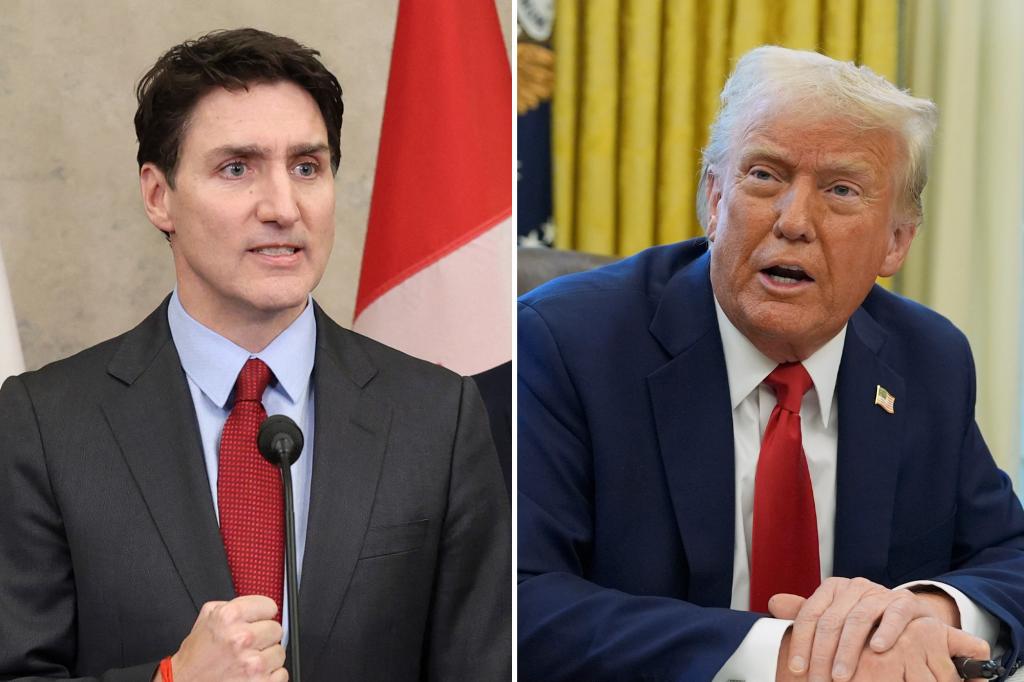Former President Donald Trump’s assertion that Canada prevents US banks from operating within its borders stems from a misunderstanding of Canadian banking regulations, rather than an outright ban. While Trump’s initial comments on Truth Social suggested a complete blockade, the reality is more nuanced, revolving around Canada’s stringent regulatory framework for foreign banks, particularly concerning capital requirements. This framework, while seemingly restrictive, aims to ensure the stability and resilience of the Canadian financial system. Trump’s subsequent decision to delay proposed tariffs on Canadian goods and energy suggests a potential easing of tensions and a willingness to explore a more amicable resolution to the underlying trade disputes.
Canada’s Bank Act of 1991 provides two avenues for foreign banks to operate within the country: as Schedule II or Schedule III banks. Schedule II banks establish Canadian subsidiaries, enabling them to accept deposits and conduct business similarly to domestic Canadian banks. This category includes major US players like JPMorgan Chase and Citibank, demonstrating a clear presence of American banking interests in Canada. These institutions are subject to the same rigorous oversight as Canada’s “Big Six” banks by the Office of the Superintendent of Financial Institutions (OSFI), Canada’s primary banking regulator. This oversight includes stringent capital requirements, particularly the common equity tier 1 ratio, which serves as a buffer against financial distress. This ratio is significantly higher in Canada than the minimum requirement set by the US Federal Reserve, reflecting Canada’s emphasis on financial stability.
Schedule III banks, on the other hand, primarily engage in wealth management and corporate services without accepting deposits. Bank of America and Wells Fargo operate under this category. This option provides a less capital-intensive route for US banks to participate in the Canadian market, focusing on specific financial services. The existence of these two distinct pathways underscores the fact that US banks are not prohibited from operating in Canada, but rather face different regulatory requirements depending on their chosen operational model. This tiered system allows for varying levels of engagement within the Canadian financial landscape.
The stricter capital requirements imposed by OSFI, particularly the higher common equity tier 1 ratio, are a cornerstone of Canada’s financial stability strategy. This approach aims to ensure that banks can withstand economic shocks and avoid the widespread failures witnessed in other countries, including the US, during periods of financial crisis. While the US Federal Reserve also imposes capital requirements, Canada’s are notably higher, reflecting a more conservative approach to risk management within the banking sector. This difference in regulatory philosophy stems from a desire to protect the Canadian financial system from the volatility that can plague less tightly regulated markets.
The disparity in bank failures between the US and Canada provides compelling evidence for the effectiveness of Canada’s regulatory approach. Since 2001, the US has experienced hundreds of bank failures, while Canada has had none. This stark contrast highlights the impact of robust regulatory oversight in mitigating systemic risk within the banking sector. While the US banking system is characterized by a larger number of smaller community banks, which can be more vulnerable to economic downturns, Canada’s more consolidated and tightly regulated system demonstrates greater resilience.
Trump’s initial claim regarding US banks being barred from Canada appears to conflate regulatory hurdles with outright prohibition. While the higher capital requirements and the need to establish subsidiaries for full-service banking operations present challenges for US banks, they do not constitute a ban. Furthermore, the historical context reveals that Canadian authorities have, at times, encouraged foreign bank participation to foster competition within the domestic banking market. This contradicts the notion of a deliberate policy to exclude US banks. The misunderstanding likely arises from a lack of familiarity with the nuances of Canadian banking regulations and the distinct roles of Schedule II and Schedule III banks.
In conclusion, the narrative surrounding US banks’ access to the Canadian market is more complex than initially portrayed. The Canadian regulatory framework, while stringent, is designed to safeguard the stability of the financial system. The existence of both Schedule II and Schedule III banks demonstrates that US banks are not prohibited from operating in Canada, but rather face different regulatory paths depending on their chosen business model. The higher capital requirements imposed by OSFI reflect Canada’s prioritization of financial stability, a strategy that has proven effective in preventing bank failures. While these regulations may pose challenges for some US banks, they do not constitute a blanket ban, as suggested by Trump’s initial remarks. A more nuanced understanding of the Canadian banking landscape reveals a system that prioritizes stability and resilience, albeit with stricter regulations than those found in the US. This framework, while potentially perceived as restrictive, has demonstrably contributed to the strength and security of the Canadian financial system.










